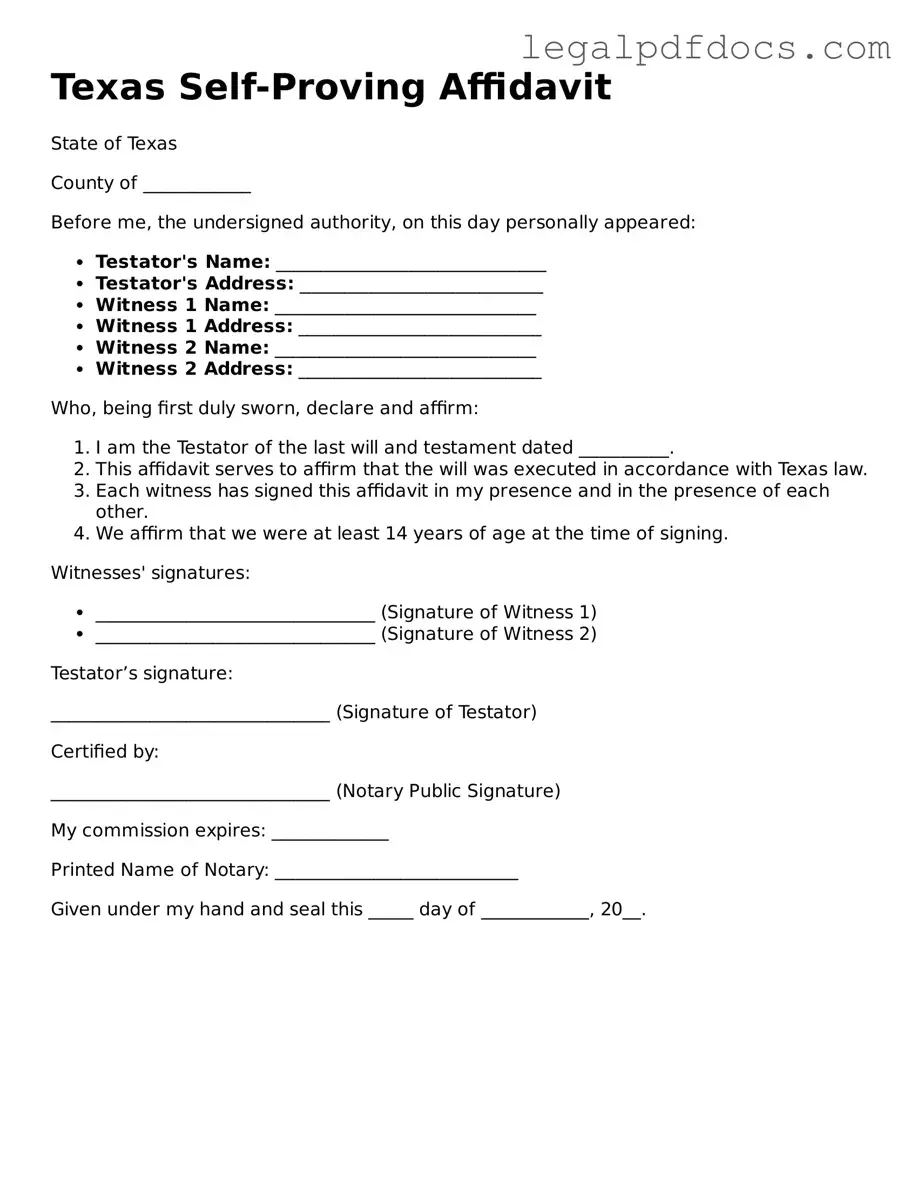Official Self-Proving Affidavit Form for Texas
The Texas Self-Proving Affidavit is a legal document that allows a testator’s will to be validated without the need for witnesses to testify in court. This form simplifies the probate process by confirming the authenticity of the will at the time of signing. Understanding its importance can help ensure that your final wishes are honored smoothly and efficiently.
Ready to take the next step? Fill out the form by clicking the button below.
Open Self-Proving Affidavit Editor Here
